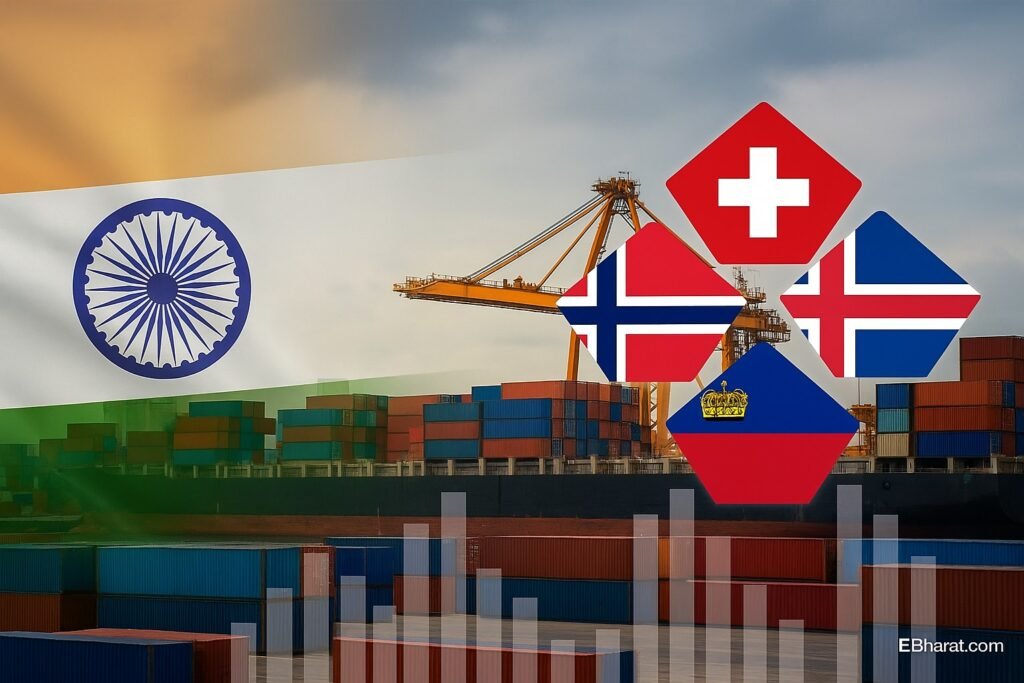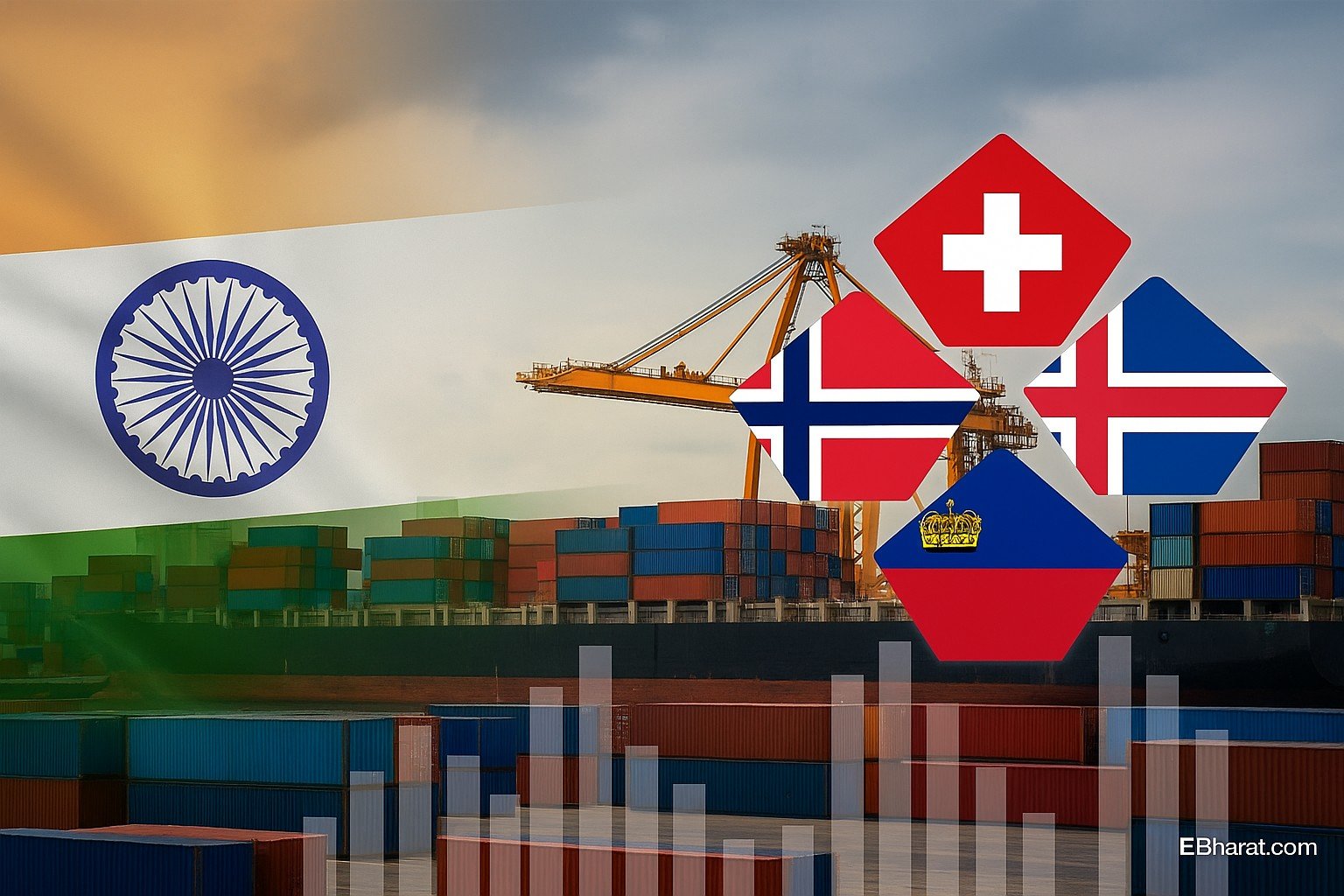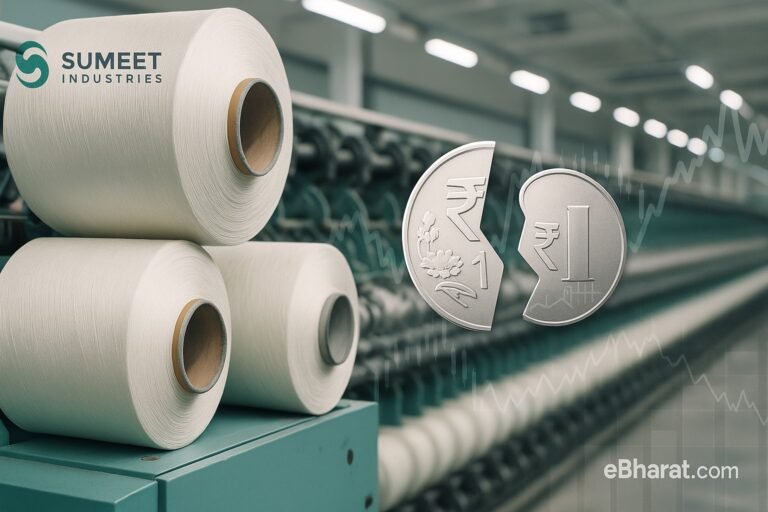
New Delhi | 01-Oct-2025, 08:45 IST
Filed via exchange & government sources
India’s first Europe-focused free trade agreement with the European Free Trade Association (EFTA) which includes Switzerland, Norway, Iceland, and Liechtenstein — officially comes into force this week. The Trade and Economic Partnership Agreement (TEPA), signed earlier this year, is being hailed as a landmark step that will expand market access for Indian exporters and attract significant foreign investment into the country.
One of the key points of interest in the agreement is that the duty structure on gold imports remains unchanged, despite the commodity being the single largest item in India’s trade basket with EFTA members.
What the pact covers
The EFTA bloc has committed to open 92.2% of its tariff lines, giving duty-free access to almost 99.6% of India’s exports. This means Indian products ranging from textiles, gems and jewellery, leather, and marine items to industrial goods like machinery, chemicals, and engineering products will see smoother entry into these markets.
In return, India has offered tariff concessions on 82.7% of its tariff lines, covering about 95.3% of EFTA exports. The list includes machinery, watches, chocolates, processed food, and high-end industrial goods. However, sensitive sectors such as dairy, soya, coal, medical devices, and certain farm products are excluded from major liberalisation.
Gold duty left untouched
More than 80% of EFTA’s exports to India are gold, making it the most significant product in bilateral trade. Yet, the Indian government has opted to keep the current duty structure intact, avoiding cuts that could have fuelled higher imports and put pressure on foreign exchange reserves.
Analysts note that while the government has liberalised several categories, its stance on gold reflects a desire to protect revenue and manage external balances, given India’s position as one of the world’s largest consumers of the metal.
Investment and job creation promises
Beyond trade in goods, the TEPA includes strong provisions for foreign direct investment. EFTA members have pledged to bring in $100 billion over the next 15 years into India, targeted at sectors such as manufacturing, infrastructure, renewable energy, and technology. The investment is expected to create up to 1 million direct jobs while supporting skill development and technology transfer.
The agreement also has chapters on services trade, intellectual property, sustainability, dispute resolution, and rules of origin, making it one of India’s most comprehensive FTAs.
Impact on Indian consumers and exporters
For Indian exporters, especially in gems & jewellery, textiles, processed food, and engineering goods, the deal opens up easier access to high-value European markets. For Indian consumers, the gradual duty cuts could make Swiss chocolates, wines, luxury watches, and premium apparel more affordable over the coming years.
Domestic manufacturers, however, will face increased competition as imported products from EFTA enter India at lower duties. The phasing of tariff cuts — over 5 to 10 years in many sectors — is intended to give local industry breathing space.
Outlook
The India–EFTA pact is being seen as a strategic milestone: it diversifies India’s trade partnerships beyond Asia, strengthens ties with advanced economies, and signals India’s willingness to integrate deeper into global value chains.
While the unchanged gold duty ensures stability in one of India’s most sensitive imports, the challenge will be to convert investment pledges into actual flows and manage any rise in the trade deficit.
For now, the message is clear — India is betting on export growth, investment inflows, and consumer choice, while carefully ring-fencing sectors like gold and dairy that carry fiscal or political sensitivities.













